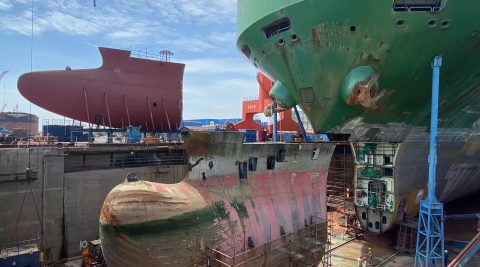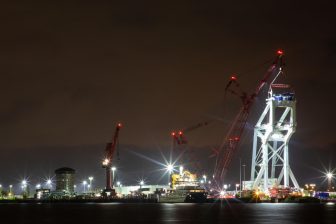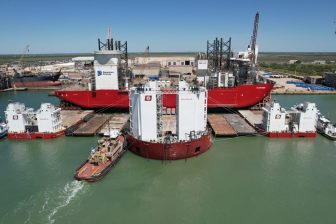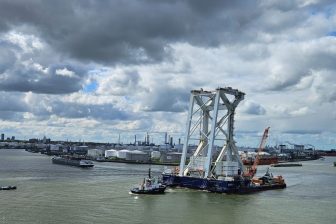
Wallenius Wilhelmsen fits Aniara with a new bulbous bow
Net-zero maritime transport will require many pieces of the puzzle, and companies are opting for various options. Alternative fuels, variations of scrubber technology, and new propulsion systems are all steps towards the goal. So is the design of new vessels, or retrofitting existing vessels.
RoRo shipping specialist, Wallenius Wilhelmsen has opted to fit one of its vessels, Aniara, with a new bulbous bow. The installation process has been completed during the three-week dry-docking period at the IMC-Yongyue (IMC-YY) repair yard in Zhoushan, China. The company further said it does not plan to stop there. Vessels Oberon, Tijuca, and Tirranna await similar enhancements, with pre-fabrication efforts well underway.
A simple observation served as the basis for this effective change. “The existing bulbous bow design was initially optimised for one very specific draught and speed. However, operational data clearly show that the vessels operate at lower draughts and speeds a significant portion of the time, where the existing design is not performing well, creating additional resistance to move through the water,” says Adam Larsson, Senior Manager of Energy Efficiency and Performance.
Teaming up with design partners, DSEC & DSME/Hanwha, the team carved out an optimised design that reduces resistance and promises considerable fuel savings. To be precise, these fuel savings amount to an average of 6 per cent, translating to a reduction of 1,400 tonnes of CO2 annually for a single vessel.
“We can expect even larger average savings if actual operating speeds are reduced in the future because the new design compared to the old will perform much better at lower speeds. Worth noticing is that at some operating conditions, such as lower draught about 8 m and 14 knots speed, the savings can be as much as up to 30 per cent,” says Larsson.
You just read one of our premium articles free of charge
Register now to keep reading premium articles.




